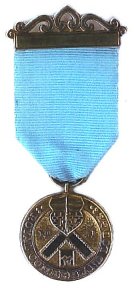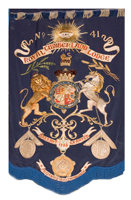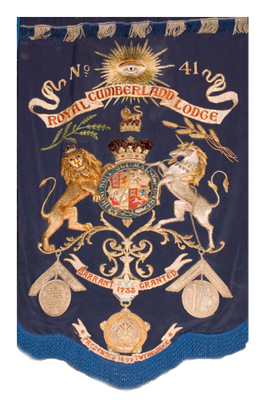The earliest Lodge minute dated 28th December 1732 records an established Lodge at the Bear Inn, Bath. It affiliated with the Moderns’ Grand Lodge the following May when it received a Deputation, signed by Lord Montague, the Grand Master.
The Beginnings and Mode of Working
The Bear Lodge almost certainly derived its membership from an earlier Lodge that met at the Queen’s Head in Bath, which had been formed by Dr. Desaguliers, Past Grand Master, in 1724. No other Lodge existed at the time in or near Bath, and like a dissolving picture the Queen’s Head Lodge fades and the Bear Lodge appears.
In 1770 Thomas Dunckerley was commissioned by the Moderns’ Grand Lodge to compile a ritual for all three degrees and it is recorded that he completed the work to the satisfaction of all Brethren. In 1784, as Provincial Grand Master, he constituted a new Lodge in Bath. It was named after the Duke of Cumberland who had been elected Grand Master in 1782. Dunckerley provided this new Lodge with a ritual and bye-laws. This was the ritual he had written for Grand Lodge and which he also gave to the Bristol Lodges a little later.
In 1785 the old ‘Bear Inn Lodge’ amalgamated with the new Royal Cumberland Lodge. The combined Lodge adopted the name Royal Cumberland but continued work under the old Deputation. Today the Lodge has the rare honour of being a Deputised rather than a Warranted Lodge and as such is one of seven so named. It is also the first Lodge to have paid for its Warrant. The Masonic Historian, W. Bro. W. J. Hughan, observed in 1880 that the Lodge at the Queen’s Head was the first Warranted Lodge for any part of the Country, and because regular Freemasonry has been in existence in the City ever since, Bath may justly be regarded as the Premier Masonic Provincial City of England.
It is interesting to note that the working compiled by Thomas Dunckerley was taken to Australia by W. Bro. Percy Wells (PM 1854), circa 1858. At that time the working was known as the ‘Somerset Ritual’. It must have provided a good base for Freemasonry as it was adopted and used by the English Lodges in South Australia, though sadly this is not the case today.
Thanks mainly to the work of W. Bro. C. Curd, PAGDC PM who at the Grand Lodge inquiry in 1929, successfully defended the right of Private Lodges to retain their old rituals, this distinguished working is used by three Bath Lodges: Royal Cumberland Lodge No 41, daughter Lodge, Royal Albert Edward Lodge No 906 and granddaughter Lodge, St. Alphege Lodge No. 4095. W. Bro. Curd in ending his case is reported as saying, “… those Lodges that did not work this ceremony were looked upon as ‘slackers’ who wished to shirk a little work and get more quickly to the banquet afterwards …”.

 Bi-Centenary Jewel (Right)
Bi-Centenary Jewel (Right)
Lodge Members are entitled to wear the Bi-Centenary Jewel. It seems that the Lodge purchased the Centenary Jewel in 1833 and then the Bi-Centenary Bar in 1933. They are purchased by Members as and when available and the funds go to the Lodge Charity accounts. Note. The Jewel is engraved with the Lodge Number 48. This number was held by the Lodge from 1832 – 1863 when it was re-numbered to its present number No. 41.
Past Masters’ Jewel (Left)
The Past Master’s Jewel is awarded to each Past Master who meets the conditions set out by the late W. Bro. Edmund White who contributed to a fund for the purchase of the Jewels. Note its unusual design.

